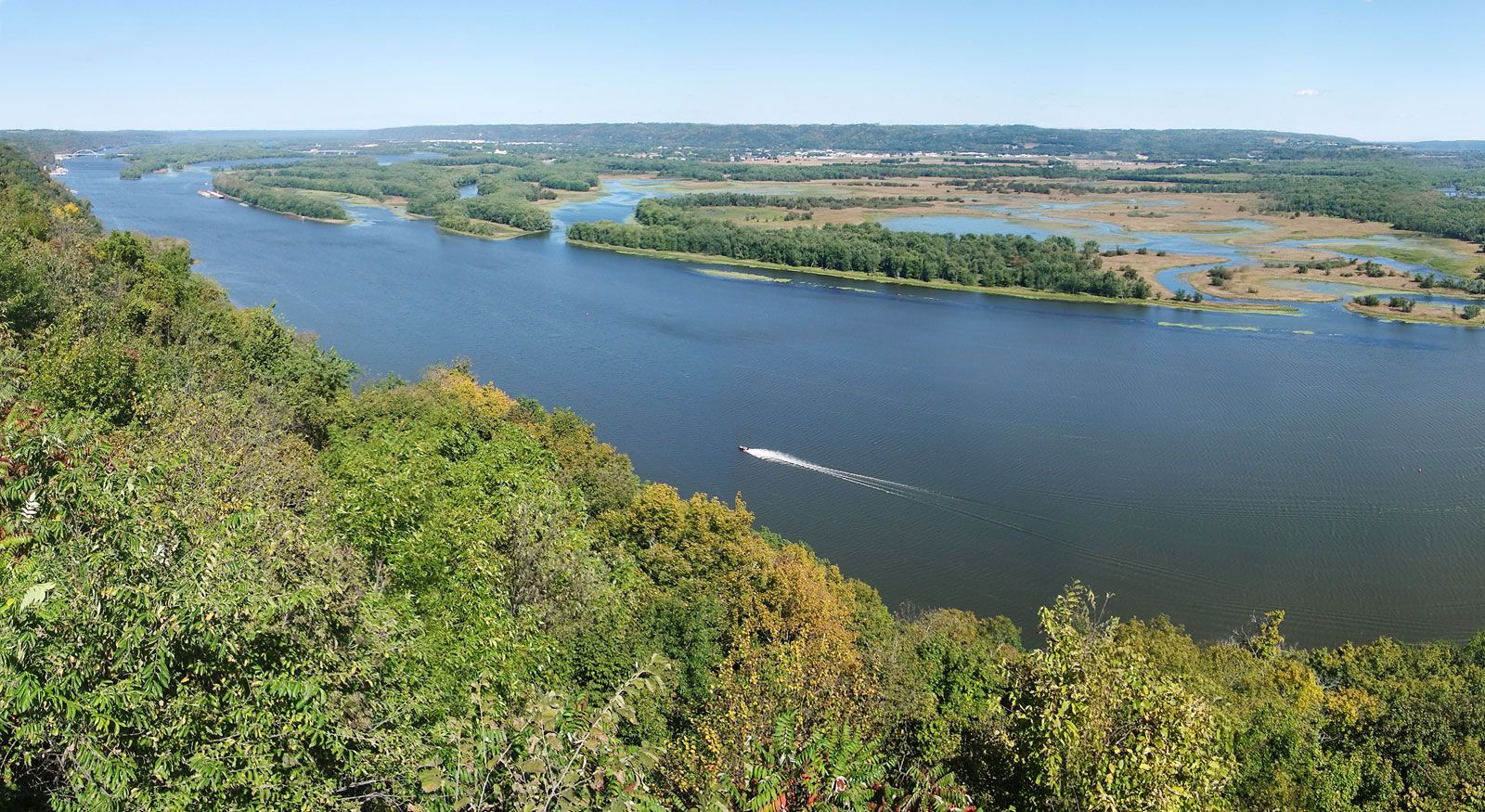The Mississippi River, a name synonymous with the heartland of America, is the longest river in North America and a vital artery of the continent. But Where Does The Mississippi River Start And End? The Mississippi River begins its epic journey at Lake Itasca in northern Minnesota and concludes its voyage in the Gulf of Mexico, southeast of New Orleans, Louisiana. This remarkable river traverses approximately 2,340 miles (3,766 kilometers) from its humble beginnings to its grand finale.
Rising from the serene waters of Lake Itasca, nestled within Itasca State Park, the Mississippi River commences as a small, clear stream. Lake Itasca, often cited as the official source, is a glacial lake surrounded by Minnesota’s northern wilderness. From this tranquil lake, the nascent Mississippi embarks on a southward trajectory, carving its path across the continental interior of the United States.
As the Mississippi meanders south, it gathers strength and volume, becoming the “Father of Waters,” as named by the Algonquian-speaking Indigenous peoples. Crucially, it is joined by two major tributaries that significantly augment its size and character. The Missouri River, flowing from the west, merges with the Mississippi roughly midway through its course, near St. Louis, Missouri. The Ohio River, arriving from the east, joins the Mississippi further downstream at Cairo, Illinois. These confluences transform the Mississippi into a truly mighty river, vastly increasing its water volume and drainage basin.
 Mississippi River basin and its drainage network
Mississippi River basin and its drainage network
The Mississippi River drainage basin and network across the United States and parts of Canada, highlighting its vast reach and the numerous tributaries feeding into the main river.
The journey of the Mississippi River culminates in the Gulf of Mexico. After its long southward flow, it empties into the Gulf through an expansive delta located southeast of New Orleans. This delta region is a dynamic environment, constantly shaped by the river’s sediment deposition and the forces of the Gulf. The point where the fresh waters of the Mississippi meet the saline waters of the Gulf of Mexico marks the river’s end, its final contribution to the vast oceanic expanse.
While the Mississippi River itself stretches 2,340 miles, its total length, when including the Missouri-Jefferson (Red Rock) system, extends to an impressive 3,710 miles (5,971 km), ranking it among the world’s longest rivers. In terms of water discharge, the Mississippi is unparalleled in North America, boasting the continent’s largest volume and ranking eighth globally. Its immense flow rate averages around 600,000 cubic feet (17,000 cubic meters) per second, underscoring its power and scale.
The Mississippi River is not only a geographical marvel but also a cornerstone of American history and commerce. Serving as a major commercial waterway, it has facilitated trade and transportation for centuries. Its fertile floodplains have supported rich agricultural lands, and the river has deeply influenced American culture and folklore. Figures like Mark Twain, Abraham Lincoln, and Ulysses S. Grant are intrinsically linked to the Mississippi, further cementing its place in the national consciousness.
 Mississippi River
Mississippi River
The Mississippi River flowing through McGregor, Iowa, showcasing the scenic beauty and natural landscapes along its upper course.
For geographical understanding, the Mississippi River is often segmented into distinct reaches. From its source to St. Paul, Minnesota, it is a clear headwater stream. The upper Mississippi, extending to the Missouri River confluence, is characterized by limestone bluffs and tributaries from several states. The middle Mississippi runs to the Ohio River confluence, significantly influenced by the sediment-rich Missouri. Finally, the lower Mississippi, below the Ohio, achieves its full grandeur, becoming a wide, meandering river on its path to the Gulf.
The confluence of the Mississippi River (left) and the Ohio River (right) at Cairo, Illinois, illustrating the dramatic increase in river size and volume at this meeting point.
In conclusion, the Mississippi River’s journey from its source at Lake Itasca to its end in the Gulf of Mexico is a remarkable testament to the geography and history of North America. Understanding where the Mississippi River starts and ends not only pinpoints its location but also unlocks a deeper appreciation for its vastness, its significance, and its enduring impact on the continent.
